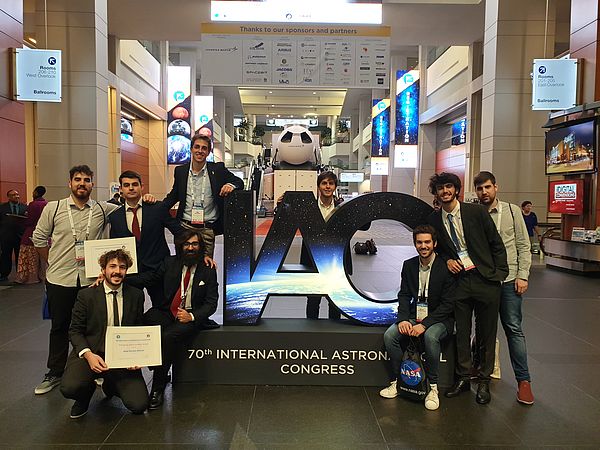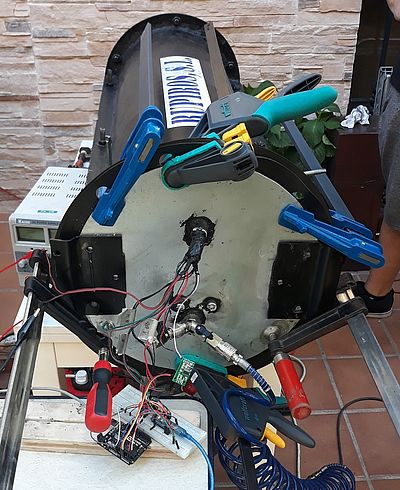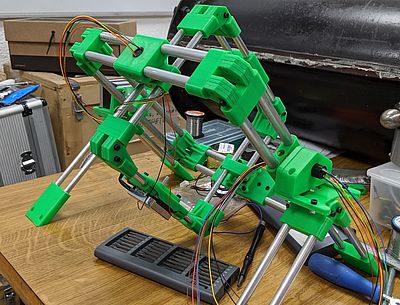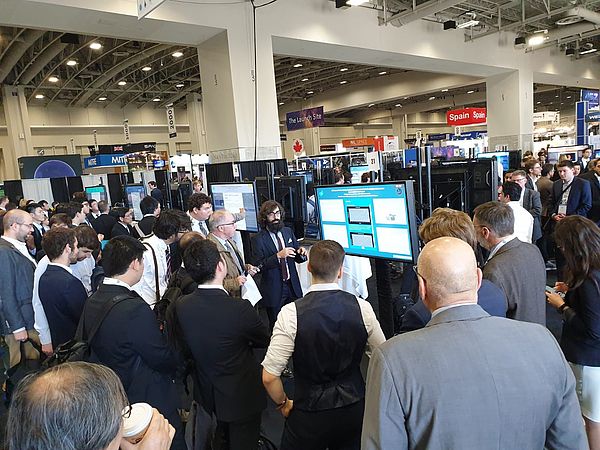The IAC hosted by the American Institute of Aeronautics and Astronautics (AIAA), annually brings together all space stakeholders, including scientists, researchers, engineers, agencies, companies, students, young professionals, politicians, astronauts, space and public media interested in this field.
Among the IAC 2019 attendees, held in Washington in late October, there were six students from the School of Aeronautical and Space Engineering [Escuela Técnica Superior de Ingeniería Aeronáutica y del Espacio, ETSIAE] of the Universidad Politécnica de Madrid (UPM). These students are part of the LEEM-UPM students' association, whose aim is to investigate, experience, and disseminate activities of a spatial and microgravity nature.

Three pilot projects
In order to disseminate their activities and projects, they attended this high-level congress where they present a paper and two interactive presentations. Certainly, it has been a golden opportunity for this association founded 13 years ago.
“Variation of a rocket engine's thrust relative to external pressure" is the title of the paper they presented in connection with an experiment in making ignitions of low impulse rocket engines (between 1 and 2 kilos of maximum force) inside a vacuum chamber. The study has consisted of more than 100 ignitions under different conditions and also a series of ignitions outside the vacuum chamber in order to assess the effect of its geometry. “The interesting results presented at the Congress may be useful to anyone who wants to replicate or improve the experiment. Besides, they have shown a correlation between thrust and external pressure," they explain.

Moreover, they presented a design and calibration project for a Random Positioning Machine (RPM), a device used on research that requires to simulate microgravity conditions. While commercial RPMs have 2 coupled rotations, the design on which the LEEM is working consists of 3 rotations.

Finally, they have also shown a study analysing different design solutions for a test bench for model rocket engines, to find the best and most efficient technical solution. “We chose a compact design, able to adapt to different measurement directions and different engine diameters.”
Working with more enthusiasm once back to Madrid
Their attendance to this Congress, hobnobbing with important representatives of the space industry meant an important jump for the LEEM association in terms of quality. Antoni, Nicolás, Javier, Carlos, Ignacio and Pablo agree that “this event is only the beginning of a changing LEEM-UPM which is coming back very strong, motivated and eager to continue working and researching. "The interest of students and professionals in the sector, as well as the acceptance of our presentations represents a shot in the arm for our future projects.”

In addition, these days in Washington have been “fascinating and instructive, and have meant a change in how we envision the space sector. Meeting such interesting people has changed our perspective. We have been able to learn from the work of other colleagues and see the professional issues and challenges of the near future,” they consider.

